022514_YKBP_A 3.pdf












Broadcaster Press 03
February 25, 2014 www.broadcasteronline.com
Professor’s research focuses
on WIMPS
By Travis Gulbrandson
travis.gulbrandson@plai
ntalk.net
Scientists have long
been searching for answers
about what makes up most
of the universe.
Through continuing
searches for weakly
interacting massive
particles (WIMPs), they
may be closer than ever
before.
Dr. Richard Schnee,
assistant professor of
physics at Syracuse
University, spoke at the
University of South Dakota
Thursday, Feb. 20, about
WIMP-related research, its
past and its future.
Schnee said the search
for WIMPs is motivated by
observations of cosmology
and astrophysics that are
“all consistent with a
picture that the universe is
geometrically flat, and that
most of the energy density
of the universe is in some
cosmological constant, or
dark energy.”
Additionally, about 30
percent of the universe’s
energy density is some
kind of “dark matter,” he
said.
“It’s non-baryonic, it’s
not made up of the same
things that make up you,
me or the rest of the earth,”
Schnee said. “This nonbaryonic, cold dark matter
can’t be any particle that
we know about, so
therefore, this is the best
experimental evidence that
the standard model of
particle physics is
incomplete.”
WIMPs are arguably the
best candidates for what
makes up dark matter, he
said.
“There are a couple
different ways you can
actually end up with
WIMPS making up this
amount of the energy
density of the universe,”
Schnee said. “First, if the
WIMPS are produced
thermally in the early
universe, when the
universe is a soup of
particles, then if the
particles are weaklyinteracting, as the universe
expands, they’ll stop being
able to find each other so
you’ll end up with some of
these particles left over.
“In addition to that, if a
WIMP is relatively light …
then WIMPS will have
about the same abundance
as the baryons. So, the
WIMPS could be related to
whatever caused an
asymmetry between matter
and anti-matter in the
universe,” he said.
There are three ways to
detect WIMPs: Using
colliders, indirect detection
and direct detection.
Each of these methods
uses interactions shown
schematically between dark
matter and standard
particles, Schnee said.
If there are enough dark
matter particles in an
astrophysical body, they
might interact with each
other and annihilate, and
then be detected with highpowered telescopes or
satellites, he said.
“The three methods of
detecting WIMPS are
complementary to each
other,” Schnee said. “It’s
possible for any one of
these three techniques to
succeed while the other
ones don’t succeed. There
are some models that are
easier to detect with
colliders, and others with
direct or indirect
detection.”
In addition, more
information can be
acquired if WIMPs are
detected with more than
one of these methods
simultaneously.
“It’s only be detecting
WIMPs by several of these
methods that we can learn
all we would like to know
about particle physics,
astrophysics and
cosmology,” Schnee said.
For example, you can
learn a lot of you detect a
WIMP in a collider, but it’s
impossible to tell if the
WIMP is stable, and
therefore the dark matter
in the universe.
“It’s only by also
detecting a particle of the
same mass using direct
detection that we know
that same particle is the
same dark matter in our
galaxy,” Schnee said.
There are about 20 such
experiments trying to
detect WIMPs that are
either running or about to
run, including one at the
Sanford Underground
Research Facility at
Homestake.
Another of these
experiments is taking place
at the Soudan Mine in
northern Minnesota,
SuperCDMS (cryogenic
dark matter search).
“Direct detection has
unique capabilities for
answering fundamental
questions about both
astrophysics and particle
physics,” Schnee said. “It is
possible that CDMS …
might already have
detected WIMP
interactions, but I would
bet against it at this point.
…
“In the long range,
CDMS technology
provides a unique
discovery potential for lowmass WIMPs, as well as a
low-risk way forward for
higher-mass WIMPs, and
radon reduction is a
critical part for this
sensitivity for low-mass
WIMPs,” he said.
Schnee said results from
the SuperCDMS
experiment will be
available in the spring.
Waterproof Boots/Shoes
Over 20 Styles To Choose From And On Sale!
Keep those toes dry!
Junior Iverson will be 90 on March 4th!
FREE Socks
With Boots!
Boston 3rd • Yankton • to Boots
Shoes 665-9092
312 W.
Send birthday wishes to:
45591 Iverson Place • Vermillion, SD 57069
Mary Berglin is retiring
as Director of the
Vermillion Food Pantry.
Please join us to
celebrate with Mary and
her family as we thank
her for her 25 years of
dedicated volunteer
service!
Retirement Celebration!
Sunday, March 2 • 1 – 3 p.m.
Trinity Lutheran Church • Fellowship Hall
816 E Clark St • Vermillion, SD
Heine Electric and Irrigation, Inc.
307 S. Robinson Avenue
Hartington, NE 68739 • 402-254-2568
Fostering the well-being of each resident by nurturing the mind, body and spirit while maintaining
each resident’s enjoyment of independence and dignity in a secure and supportive environment.
StoneyBrook Suites
301 Dakota Dunes Blvd.
Dakota Dunes, SD
Call 605-242-0013
stoneybrooksuites.com
Call today for a tour and a free lunch!
February Special-Huge Discounts
Grain Bin Days February 27 & 28










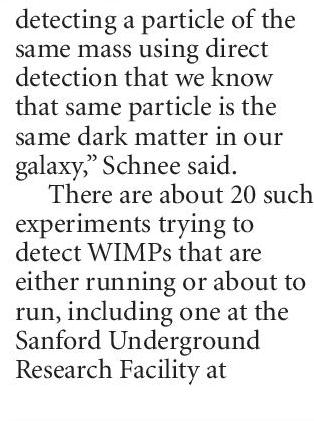



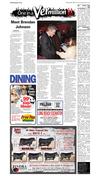
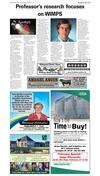



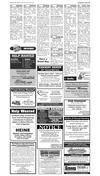
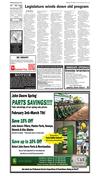
 Previous Page
Previous Page






